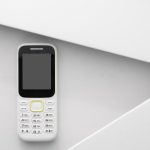An EID number occupies one of the central places in modern telecommunications – in mobile networks and with the use of the concepts of emblembed SIM. This is article will explore what an EID number is, how to locate one if you need it, and why you might need one.
Table of Contents
What Is an EID Number?
EID stands for Embedded Identity Document or eSIM Identifier. It is actually being defined as a 32-digit universal integrated circuit card identifier assigned to eSIM in a mobile device. While on the other hand, the embedding process of eSIMs is portable, permanent and are installed directly into gadgets such as smart phones, smart watches, tablets, and other connected devices.
The eSIM also possesses an EID number just like every SIM has an ICCID, which stands for Integrated Circuit Card Identifier. This number is needed for eSIM services activation, for controlling the mobile plans as well as for safe connection.
Where to Find Your EID Number
Locating your EID number depends on your device type. Here are common ways to find it:
On Your Mobile Device
- iPhone: Go to Settings > General > About, then scroll down to find the EID number.
- Android (Samsung, Google Pixel, etc.): Navigate to Settings > About Phone > Status Information, then look for EID.
On the Device Packaging
The EID number is usually printed on the original packaging of the device in the barcode area.
Using USSD Code
Some of the mobile service providers offer USSD code to check the EID. Go to settings, click on about the device, then type *#06#, possibly the EID may also be shown along the IMEI and other numbers.
Via Carrier or Mobile App
Typically, in service applications for most mobile carriers, there is the option ‘device details,’ which includes the EID number.
Why Is the EID Number Important?
eSIM Activation and Management
The EID number is critical when it comes to eSIM services’ activation. When porting or getting a new plan, the provider can remotely provision the eSIM by using its Electronic Identity (EID).
Enhanced Security
Compared to regular, physical SIM cards that can be stolen or cloned, those associated with an EID are more secure. Secondly, the embedded SIM technology does not allow a device to be removed in a bid to avert any existing security provisions.
Simplified International Roaming
Most tourists and globetrotters utilize eSIMs to subscribe to global roaming data packages without swapping SIM cards. The EID also provides a possibility for uninterrupted registration to work with foreign network providers.
Multi-Carrier Support
A important aspect that should be mentioned is that a number of devices can be equipped with two or more eSIMs. With the EID feature, there is a unique opportunity to easily switch between different mobile networks which means that one does not need to have several SIM cards from different service providers to be able to manage the different plans.
Difference Between EID, IMEI, and ICCID
Some of these mobile users mistake the EID for other similar differentiating numbers:
- EID (Embedded Identity Document): 32-digit identification number assigned to the eSIM that once given to activate and manage it.
- IMEI (International Mobile Equipment Identity): a unique former 14-digit number; currently extended to 15 digits and used to identify a particular piece of mobile terminal equipment in a network. Yet it can also be used in tracing phones that are lost or stolen since the main goal of people having the phones is to keep track of all the mobile phones.
- ICCID (Integrated Circuit Card Identifier): A code given to ordinary sims used in activating on the mobile networks.
Whereas IMEI is the reference for the device and ICCID is actually the ID for the plastic card SIMs, EID refers to embedded SIMs.
How to Use an EID Number for eSIM Activation
If you need to activate an eSIM using your EID, follow these steps:
- Get an eSIM Plan: Contact a carrier that supports eSIM services and purchase a plan.
- Provide Your EID: The carrier may ask for your EID to link the eSIM to your device.
- Scan a QR Code: Most providers offer a QR code that you can scan in your phone’s settings under Cellular > Add eSIM.
- Confirm Activation: Follow the on-screen instructions to complete the activation.
Some carriers allow manual input of EID numbers if QR scanning isn’t an option.
Conclusion
The EID number is needed for the modern eSIM-equipped devices that allow to connect to the network in a secure, easy and efficient manner. Regardless if you are porting, going abroad or needing added protection, knowing the EID will surely assist in using the device properly.
Also Read: How to Check Room Temperature Accurately – Best Methods & Tools







